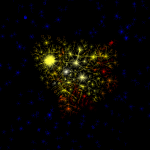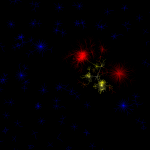Over a long enough period of time, maps of who is talking with whom mostly look the same. Many conversations start to overlap with each other, and eventually you see a large central core and any number of outliers.
However if you look over short enough periods, you can see patterns of how those conversations start to merge. And, you can tell a lot. Easily.


Here we have a mapping of conversation partners mentioning two of the top sports apparel manufacturers, measured over the same period. Compare the shapes of Brand A (on left) to Brand B.
Brand B (on right) has a few larger clusters of conversation, lightly linked together by a few individuals participating in a number of the conversations.
Brand A has a lot of smaller conversations, interspersed with a handful of larger dense clusters; all webbed together in wide mesh.
So which is better?
Well, better for what? That’s the $64,000 question in social analytics. You need a goal, but hopefully that’s why you started looking for metrics in the first place. Right?
That’s not necessarily true. There’s a lot already baked into the question. These two brands and their products are in direct competition.
Brand A has a much stronger network of communication, in both breadth and quantity of conversation clusters. There are also a large number of small, non-connected conversations in the blue fringes that may be pulled into the core over time. That means there’s more to keep track of, but likely a stable set of opinions. Opinions will not likely change without introducing something substantively new, as information flows between the clusters fairly freely. This network displays characteristics of healthy and robust interaction.
Brand B, even excepting a significantly smaller quantity of conversation clusters, is heavily based on a few conversation clusters connected through a small number of individuals. This indicates a fragility and possibly wider variance in opinion within the overall set of conversations. In this structure, information will flow between clusters more slowly. The second element Brand B is missing is depth of field in potential new recruits. Brand A has quite a few blue conversations in the periphery with potential to join the core. Brand B has very few. I’d rather not be representing Brand B.